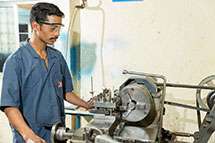Dial Gauge Gap Flush Fixture
 We are also offer a excellence assorted range of Dial Gauge Gap Flush Fixture Manufacturers that are made in accordance with international parameters. we availing this range at Sutaible rates Gap and Flush Fixture solution .
We are also offer a excellence assorted range of Dial Gauge Gap Flush Fixture Manufacturers that are made in accordance with international parameters. we availing this range at Sutaible rates Gap and Flush Fixture solution .
A Dial Gauge Gap Flush Fixture Manufacturers is a precision tool used in manufacturing and engineering processes to ensure accurate alignment and measurement of gaps between components. Consisting of a dial gauge mounted on a fixture, this device plays a crucial role in maintaining quality standards and adherence to specifications in various industries such as automotive, aerospace, and electronics.
The primary function of the Dial Gauge Gap Flush Fixture is to measure the distance or gap between two surfaces with utmost precision. This can include gaps between mating parts, alignment of components, or ensuring proper clearances in mechanical assemblies. By providing accurate readings displayed on the dial gauge, engineers and technicians can make necessary adjustments to meet desired tolerances and ensure optimal functionality of the final product.
One of the key features of the Dial Gauge Gap Flush Fixture is its versatility. It can be customized to accommodate specific measurement requirements and configurations based on the application. Whether it’s a simple fixture for measuring small gaps or a complex setup for intricate assemblies, this tool offers flexibility and reliability in various manufacturing environments Gap and Flush Fixture solution .
Furthermore, the Dial Gauge Gap Flush Fixture enhances efficiency and productivity in production processes by streamlining inspection procedures. With quick and precise measurements, manufacturers can identify potential issues early in the production cycle, preventing costly rework or product defects downstream.
In addition to its role in quality assurance, the Dial Gauge Gap Flush Fixture also contributes to process optimization and continuous improvement initiatives. By analyzing measurement data over time, engineers can identify trends, optimize assembly processes, and implement corrective actions to enhance product quality and consistency.
